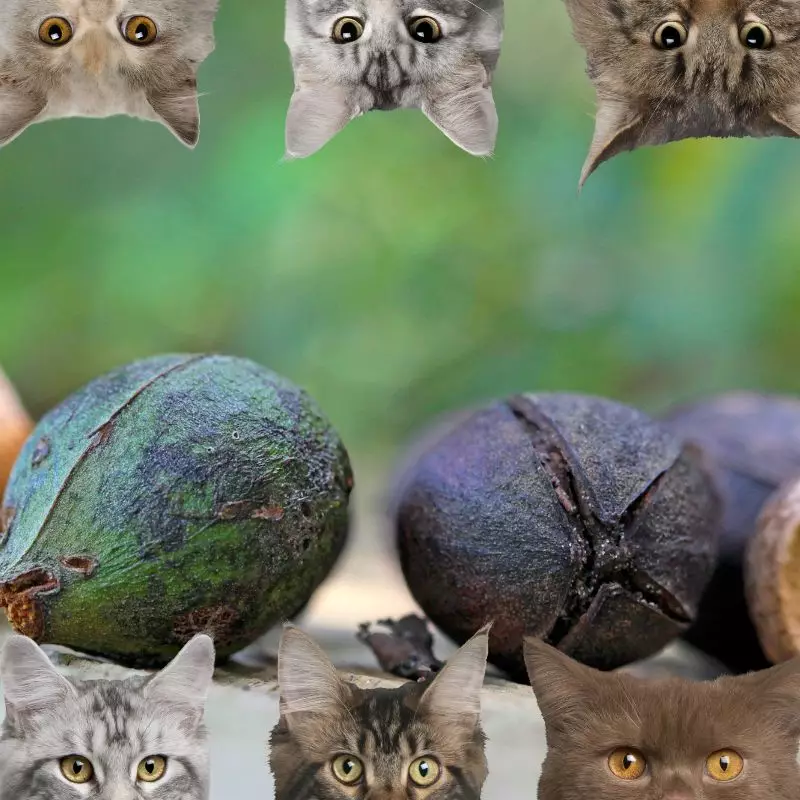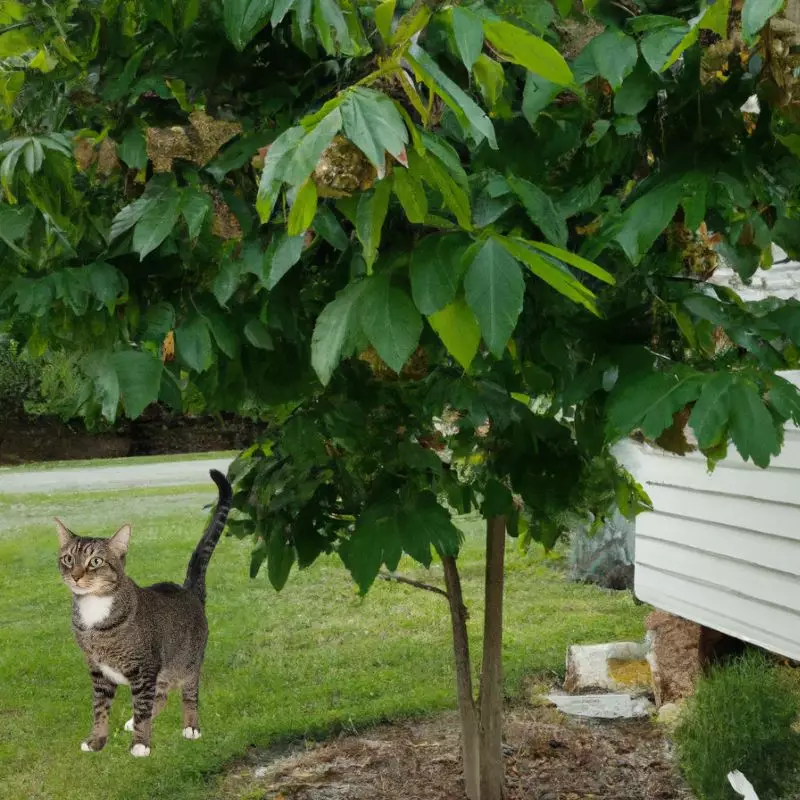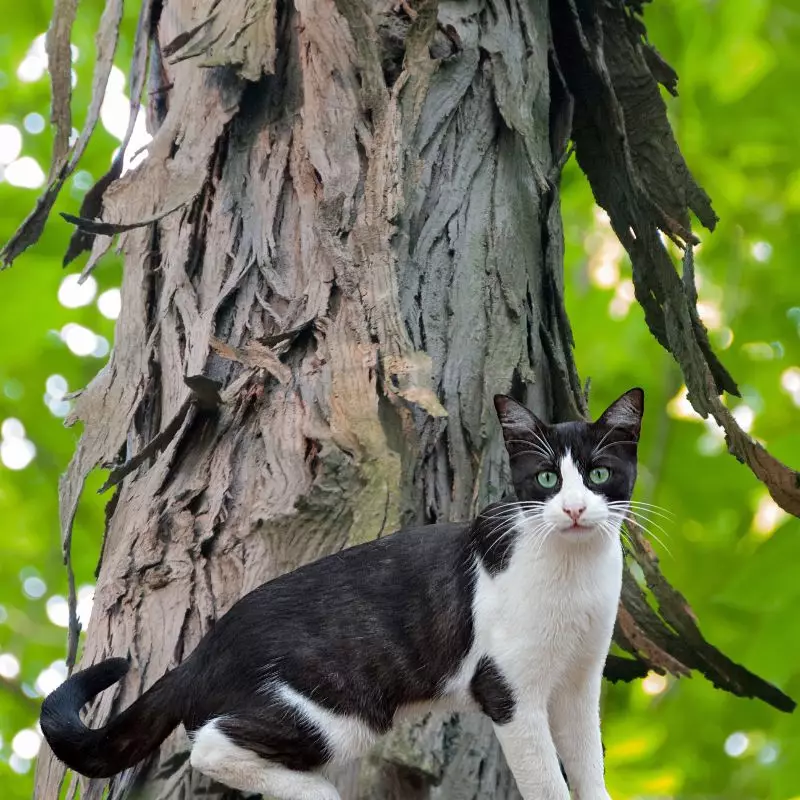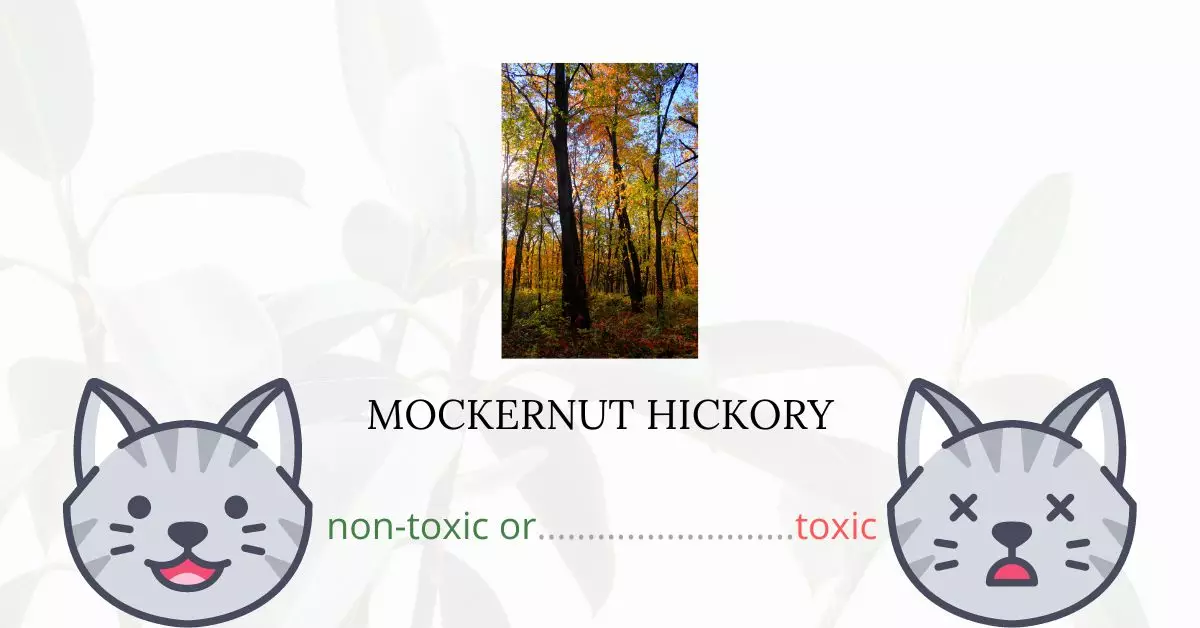No, mockernut hickory (also known as squarenut) is not toxic to cats. This assessment is based on research and authoritative sources, including The American Society for the Prevention of Cruelty to Animals (ASPCA). They have found no systemic effects on animals or any intense impact on the gastrointestinal tract from the tree.
This article was written in collaboration with a team of experienced DVMs (doctors of veterinary medicine). Through their insights, we are able to provide accurate and up-to-date information on the potential risks associated with various plants, specifically Mockernut Hickory in this case. Additionally, for thoroughness and reliability, we have referenced high-authority websites such as ASPCA and PetMD to ensure the most accurate information regarding every plant’s effect on cats.
Can Cats Eat Mockernut Hickory or Squarenut?

A small amount of mockernut hickory won’t harm your cat if it eats it. Despite not being poisonous to cats, it could nevertheless make them throw up. Any plant can irritate their stomach, just like new diets or eating too much food can make them throw up. Oat grass and dried ficus leaves are two fantastic plants that cats find to be highly appetizing. It is ideal for cats to eat some natural fiber.
What is Mockernut Hickory or Squarenut?

Carya tomentosa, also known as mockernut hickory, white hickory, whiteheart hickory, hognut, and bullnut, is a species of tree in the walnut family. It is a medium-sized tree that can reach a height of 80 feet and have a trunk that is up to two feet broad. It is the most prevalent of the hickories and is widespread in the eastern part of the US, growing from Massachusetts and New York west to southern Ontario, southern Michigan, and northern Illinois; then to southeastern Iowa, Missouri, and eastern Kansas; south to eastern Texas; and east to northern Florida.
Although the Mockernut hickory grows slowly, it has a lengthy lifespan and can occasionally live for 500 years.
Keeping Cats Away From Mockernut Fruit or Squarenut

Clear the yard of all food. Any form of food you have in your yard is probably going to draw cats. Pets should not be fed outside, and any waste containing food scraps should be properly covered and sealed. Grills should be cleaned to get rid of food smells.
Another physical obstacle that is like kryptonite to cats is water. Try using a Super Soaker or comparable water gun to squirt cats that you catch in the restricted area. The idea that they are not desired in your yard is reinforced by this technique. You can buy a water device, like a Scarecrow Sprinkler, that senses an intruder’s presence and shoots a blast of water at it because you can’t sit in your yard all day, every day.
Plants to Avoid For Your Cats
If you are a cat owner and unsure if the plants growing in your yard are harmful to your cats, check out this list of toxic plants for cats. You can also check our list of non-toxic plants for cats.





